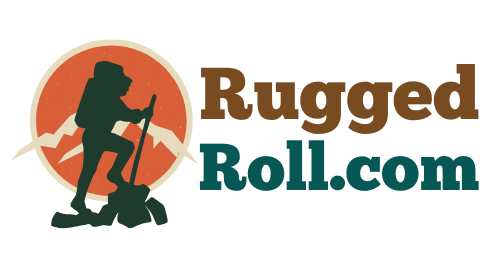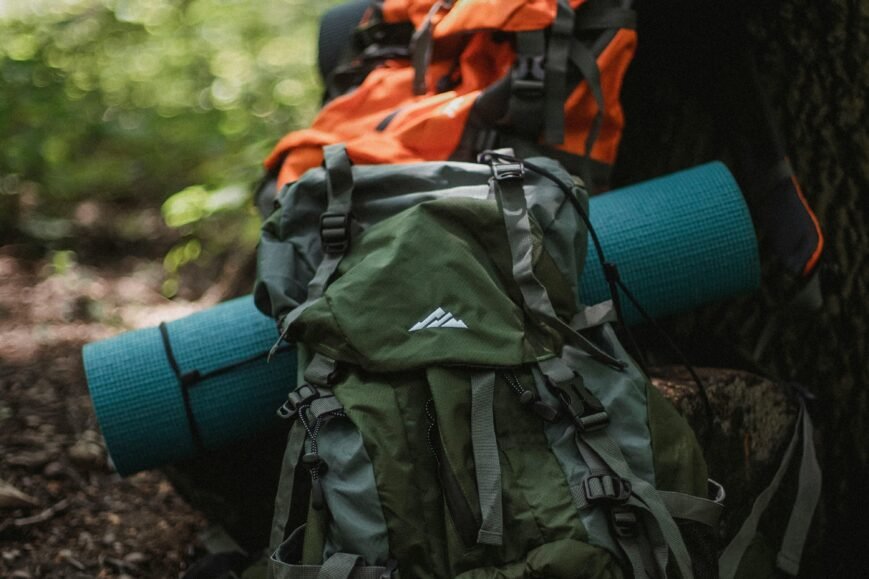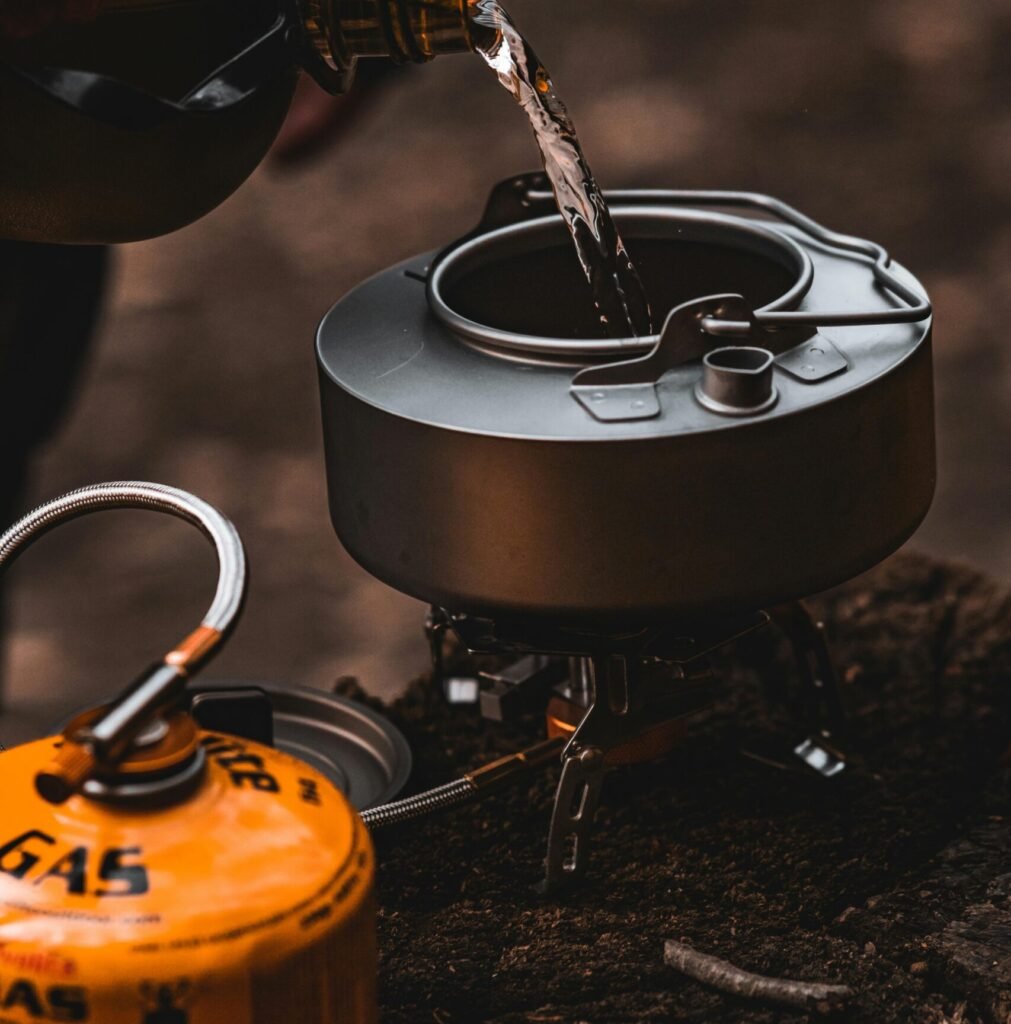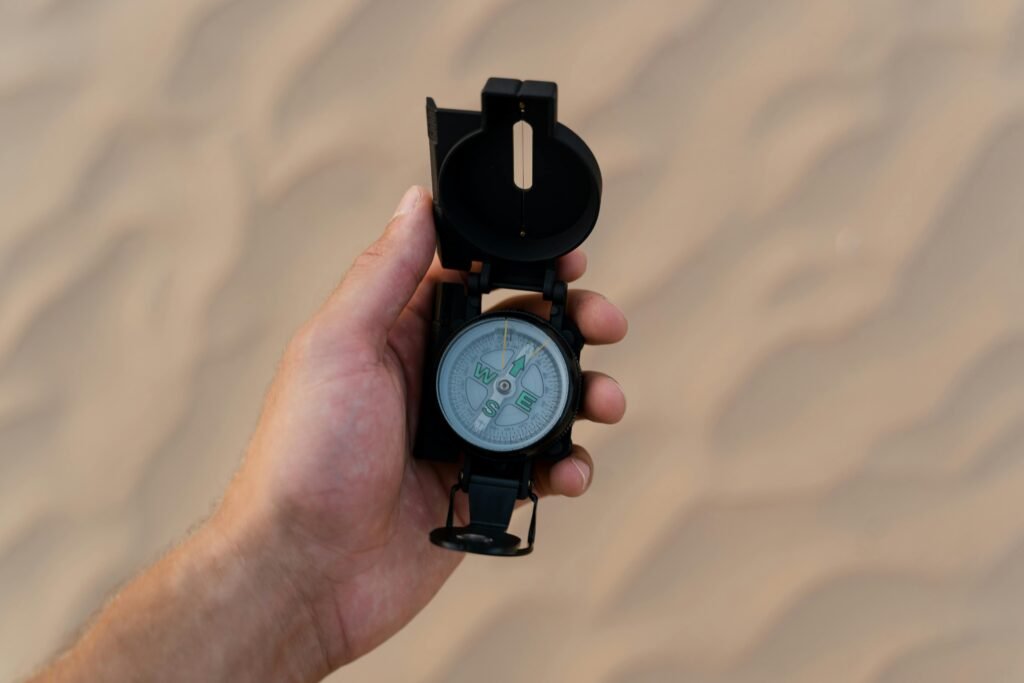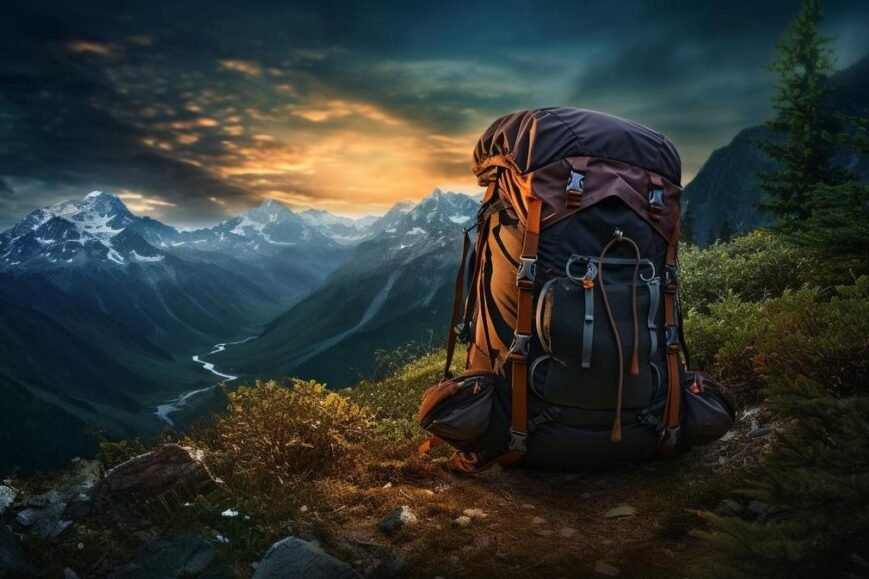When it comes to backpacking, having a reliable and versatile knife is essential. Whether you’re hiking, trekking, or backpacking, a good knife can be a valuable tool in various situations. But with so many options available, which one should you choose, a folding knife or a fixed blade knife? In this article, we will explore the differences between these two types of knives and help you make an informed decision on which one is best for your backpacking adventures.
Understanding the Basics
Folding Knives
Folding knives, also known as pocket knives, are designed with a pivot mechanism that allows the blade to fold into the handle. These knives are compact and easy to carry, making them popular among backpackers. They typically have a locking mechanism to keep the blade securely in place when in use.
In backpacking, folding knives are versatile tools that can be used for various tasks such as cutting ropes, preparing food, or even starting a fire. They are lightweight and take up minimal space, making them ideal for those who prioritize weight and space considerations in their backpacking gear.
Fixed Blade Knives
On the other hand, fixed blade knives have a blade that extends from the handle without any folding mechanism. These knives are known for their strength, durability, and reliability. They are commonly used in more demanding backpacking scenarios, such as bushcraft or survival situations.
Fixed blade knives excel in tasks that require more force, such as batoning wood or performing heavy-duty cutting tasks. They are also easier to clean and maintain compared to folding knives. However, due to their larger size, they may take up more space and add weight to your backpack.

Factors to Consider When Choosing a Backpacking Knife
When deciding between a folding knife and a fixed blade knife for backpacking, several factors should be taken into consideration:
Purpose and Type of Tasks
Think about the specific tasks you expect to perform with your knife during your backpacking trips. Are you mainly looking for a knife to handle basic cutting tasks like food preparation and rope cutting? Or do you anticipate needing a knife for more demanding tasks like wood processing or self-defense? Understanding your intended use will help you determine which type of knife is best suited for your needs.
Weight and Space Considerations
Backpacking often requires careful consideration of weight and space limitations. If you prioritize minimizing weight and saving space, a folding knife may be the better option. These knives are generally lighter and more compact than fixed blade knives. However, if you value the added strength and durability of a fixed blade knife, you may be willing to sacrifice a bit of weight and space.
Durability and Reliability
In rugged backpacking environments, durability and reliability are crucial. Fixed blade knives are generally considered to be more durable and reliable due to their solid construction and lack of moving parts. Folding knives, while still durable, may have more potential points of failure due to their folding mechanism. Consider the conditions in which you will be backpacking and choose a knife that can withstand the demands of your adventures.
Ease of Use and Accessibility
When it comes to ease of use and accessibility, folding knives have the advantage. They can be easily opened with one hand and are generally more user-friendly. Fixed blade knives, on the other hand, require a sheath for safe storage and may take a bit more time and effort to access. Consider your preference for quick and easy access versus the added security and stability of a fixed blade knife.
Safety Concerns
Safety should always be a top priority when choosing a backpacking knife. Folding knives with a reliable locking mechanism can provide added safety by preventing accidental closure during use. Fixed blade knives, while lacking a folding mechanism, require proper sheathing and handling techniques to ensure safe use. Consider your comfort level with each type of knife and choose the one that aligns with your safety preferences.
Maintenance and Care
Proper maintenance and care are essential for the longevity of your backpacking knife. Folding knives may require more frequent cleaning and lubrication to ensure smooth operation of the folding mechanism. Fixed blade knives, on the other hand, are generally easier to clean and maintain due to their simpler design. Consider your willingness to invest time and effort into maintaining your knife and choose accordingly.
Legal Considerations for Carrying Knives
Before purchasing a backpacking knife, it’s important to familiarize yourself with the legal regulations regarding knife carry in your specific region. Different countries and even states may have varying laws and restrictions on the length and type of knives that can be carried. Ensure that you choose a knife that complies with the legal requirements of your backpacking destinations.

In-Depth Comparison
Now that we have explored the basics and factors to consider, let’s dive deeper into the specific pros and cons of folding knives and fixed blade knives for backpacking.
Folding Knives
Folding knives offer several advantages for backpackers:
- Portability: Folding knives are compact and easy to carry, making them convenient for backpacking trips where space is limited.
- Versatility: These knives can handle a wide range of tasks, from basic cutting to more intricate tasks like food preparation.
- Safety: Folding knives often come with a locking mechanism that keeps the blade securely in place during use, reducing the risk of accidents.
- Accessibility: Many folding knives can be opened with one hand, allowing for quick and easy access when needed.
However, there are also some drawbacks to consider:
- Durability: The folding mechanism of these knives introduces potential points of failure, and the moving parts may require more frequent maintenance.
- Strength: Folding knives may not be as strong as fixed blade knives, making them less suitable for heavy-duty tasks.
- Cleaning: The folding mechanism can make cleaning and maintenance more challenging compared to fixed blade knives.
When choosing a folding knife for backpacking, consider the following features:
- Blade Steel: Look for high-quality blade steel that offers good edge retention and corrosion resistance, such as stainless steel or carbon steel.
- Lock Type: Different folding knives use various locking mechanisms, including liner locks, frame locks, and lockbacks. Choose a lock type that provides secure blade locking during use.
Fixed Blade Knives
Fixed blade knives also have their own set of advantages:
- Strength and Durability: Fixed blade knives are generally stronger and more durable than folding knives, making them suitable for heavy-duty tasks.
- Easy Maintenance: With no moving parts, fixed blade knives are easier to clean and maintain.
- Reliability: These knives are less prone to mechanical failure, providing a reliable tool in demanding backpacking situations.
- Sheath Quality: Fixed blade knives often come with high-quality sheaths that offer secure storage and quick access when needed.
However, there are a few considerations to keep in mind:
- Size and Weight: Fixed blade knives are typically larger and heavier than folding knives, which may impact your overall backpacking gear weight and space.
- Accessibility: You will need a sheath to carry a fixed blade knife safely, which may require additional effort to access the knife when needed.
- Legal Restrictions: Fixed blade knives may be subject to stricter legal regulations in some regions, so be sure to check the laws before carrying one.
When choosing a fixed blade knife for backpacking, consider the following features:
- Full Tang: Look for knives with a full tang construction, where the blade extends through the entire handle. This provides added strength and durability.
- Blade Shape: Different blade shapes, such as drop point, clip point, or tanto, offer varying advantages for different tasks. Choose a blade shape that suits your specific needs.
- Sheath Design: Consider the quality and functionality of the sheath, ensuring it provides secure storage and easy access.

Situational Considerations
To further guide your decision, consider the specific situations and backpacking styles you may encounter:
Match the Knife to Your Backpacking Style
Different backpacking styles may require different knife types. Consider the following:
- Ultralight Backpacking: If you prioritize minimizing weight, a folding knife may be more suitable for your ultralight gear setup.
- Bushcraft and Survival: In scenarios where you anticipate heavy-duty tasks like wood processing or building shelters, a fixed blade knife’s strength and durability may be preferable.
Environmental Factors
Environmental conditions can also influence your knife choice:
- Wet Conditions: If you expect to encounter wet environments or need a knife for water-related tasks, consider a knife with corrosion-resistant materials.
- Cold Weather: In cold weather, folding knives may be more prone to freezing or becoming difficult to operate. Fixed blade knives are generally more reliable in such conditions.
Duration and Nature of the Trip
The length and nature of your backpacking trip can impact your knife choice:
- Short Trips: For shorter trips where weight and space are less critical, you may opt for a fixed blade knife for its added strength and versatility.
- Long Expeditions: On longer expeditions, where durability and reliability are paramount, a fixed blade knife may be the better choice.

User Experience and Ergonomics
Consider the following aspects of user experience and ergonomics when choosing a backpacking knife:
- Handling and Comfort: Look for a knife with a handle that feels comfortable in your hand and provides a secure grip, even in wet or slippery conditions.
- One-Handed Operation vs. Two-Handed Operation: Folding knives offer the convenience of one-handed operation, while fixed blade knives typically require two hands for use.
- Grip and Handle Materials: Consider the materials used for the handle, such as rubber, G10, or wood, and choose one that suits your preferences for grip and comfort.
Technical Specifications
Understanding the technical specifications of knives can help you make an informed decision:
Blade Materials and Edge Retention
Different blade materials offer varying levels of edge retention and corrosion resistance. Common blade materials include stainless steel, carbon steel
and high-carbon stainless steel. Stainless steel blades are known for their corrosion resistance, making them ideal for outdoor use. Carbon steel blades, on the other hand, are known for their excellent edge retention and are easier to sharpen. Consider your priorities in terms of edge retention and corrosion resistance when selecting a blade material.
Blade Length and Shape
The length and shape of the blade can greatly impact its functionality. Longer blades are better suited for tasks that require more reach, such as batoning wood or cutting larger objects. Shorter blades, on the other hand, offer more control and precision for tasks like food preparation or carving. Blade shapes, such as drop point, clip point, or tanto, offer different advantages for specific tasks. Choose a blade length and shape that align with your intended use.
Handle Design and Materials
The design and materials of the handle can greatly affect the comfort and grip of the knife. Look for handles that are ergonomically designed and provide a secure grip, even in wet or slippery conditions. Common handle materials include rubber, G10, wood, and synthetic composites. Consider your preferences for grip and comfort when selecting a handle material.
Overall Size and Weight
The overall size and weight of the knife can impact your backpacking experience. A compact and lightweight knife is ideal for those who prioritize minimizing weight and saving space. However, if you value the added strength and durability of a larger knife, you may be willing to carry the extra weight. Consider the size and weight of the knife in relation to your backpacking gear and personal preferences.
FAQ
Q: Can I carry a folding knife in my backpack while traveling?
Yes, you can generally carry a folding knife in your backpack while traveling. However, it’s important to familiarize yourself with the legal regulations regarding knife carry in your specific region. Different countries and even states may have varying laws and restrictions on the length and type of knives that can be carried. Ensure that you comply with the legal requirements of your backpacking destinations.
Q: Are fixed blade knives more durable than folding knives?
Yes, fixed blade knives are generally considered to be more durable than folding knives. Fixed blade knives have a solid construction with no moving parts, making them less prone to mechanical failure. However, folding knives can still be durable, but their folding mechanism introduces potential points of failure.
Q: Which type of knife is better for basic cutting tasks like food preparation?
Both folding knives and fixed blade knives can handle basic cutting tasks like food preparation. However, folding knives offer the advantage of being more compact and easily accessible. They are often designed with a locking mechanism to keep the blade securely in place during use, providing added safety.
Q: Can I use a folding knife for heavy-duty tasks like batoning wood?
While folding knives can handle some heavy-duty tasks, they may not be as suitable as fixed blade knives. Fixed blade knives are generally stronger and more durable, making them better suited for tasks that require more force, such as batoning wood or performing heavy-duty cutting tasks.
Q: How often should I clean and maintain my backpacking knife?
The frequency of cleaning and maintenance for your backpacking knife will depend on several factors, including the type of knife and the conditions in which it is used. Folding knives with a folding mechanism may require more frequent cleaning and lubrication to ensure smooth operation.
Fixed blade knives, on the other hand, are generally easier to clean and maintain due to their simpler design. It’s recommended to clean and lubricate your knife regularly, especially after extended use or exposure to harsh conditions.
Conclusion
When it comes to choosing between a folding knife and a fixed blade knife for backpacking, there is no definitive answer. Both types of knives have their own advantages and considerations. It ultimately comes down to your personal preferences, intended use, and the specific requirements of your backpacking adventures.
Consider factors such as purpose, weight and space considerations, durability, ease of use, safety, maintenance, and legal considerations when making your decision. By understanding the differences and considering your specific needs, you can choose the knife that best suits your backpacking style and enhances your outdoor experiences.
![]()
